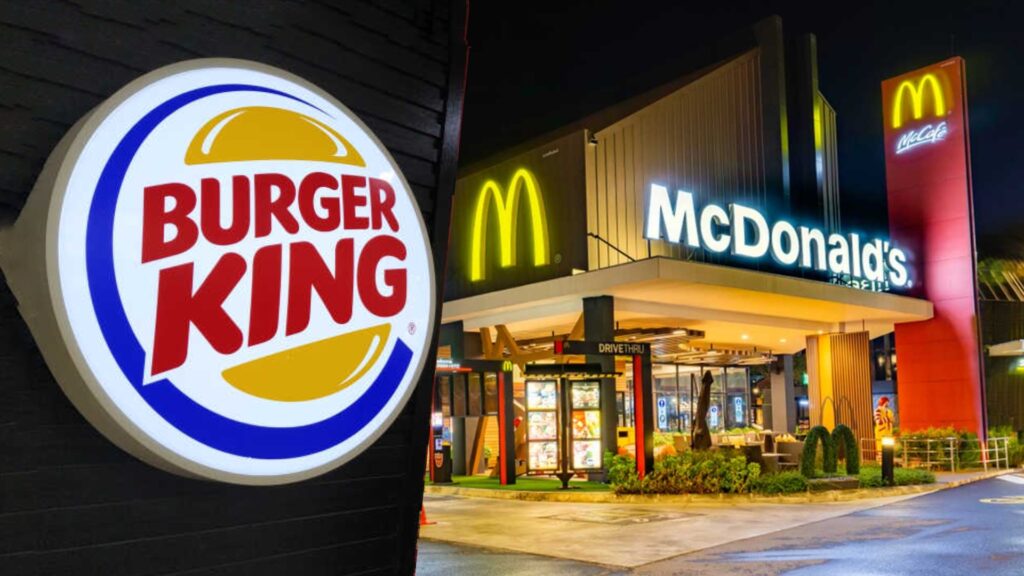
Burger King and McDonald’s are two of the most well-known fast-food chains in the world. While both serve up quick, tasty meals, they’ve gone about building their empires in very different ways. Let’s take a deeper dive into how these two brands have not only survived but thrived in the competitive fast-food industry.
McDonald’s: The Global Leader
McDonald’s story begins in 1940, in a small drive-in restaurant in San Bernardino, California, where Richard and Maurice McDonald introduced the “Speedee Service System.” This innovative approach to fast food—focusing on speed and efficiency—set the foundation for what we know as the fast-food industry today. But it was Ray Kroc who truly turned McDonald’s into a global sensation when he joined the company in 1955 and transformed it into the franchise model that helped it explode worldwide.
Fast forward to today, and McDonald’s is a household name. With over 40,000 locations across more than 100 countries, McDonald’s has made a name for itself by offering a consistent and quick dining experience. The Big Mac, Egg McMuffin, and McFlurry are just a few iconic items that have become staples in the fast-food world.
The secret behind McDonald’s success is its consistency. Whether you’re in New York, Tokyo, or Rio de Janeiro, you know exactly what you’re getting when you walk into a McDonald’s. Its marketing is focused on family-friendly branding, memorable slogans like “I’m Lovin’ It,” and fun collaborations with movies and sports events.
But McDonald’s isn’t stuck in the past. The brand has embraced technology, from self-order kiosks to mobile apps for ordering and delivery. It also continues to cater to local tastes, introducing items like the Chicken Maharaja Mac in India or the Teriyaki Burger in Japan to appeal to regional preferences.
Burger King: The Challenger Brand
While McDonald’s became a global giant, Burger King took a different route. Founded in 1954 by James McLamore and David Edgerton in Miami, Florida, Burger King made a name for itself by introducing flame-grilled burgers—a unique method that set it apart from competitors. The Whopper, introduced in 1957, quickly became the brand’s signature product and is still one of the most popular burgers worldwide.
Burger King operates in over 100 countries, with more than 18,000 locations. However, it has always been the underdog in the battle with McDonald’s. While McDonald’s sticks to efficiency and consistency, Burger King embraces its “Have It Your Way” philosophy, offering customers the freedom to customize their meals. This focus on personalization helps Burger King stand out in a market where many fast-food chains rely on standardized menus.
Burger King has also embraced innovation in its menu. In 2019, it introduced the Impossible Whopper—a plant-based version of its signature Whopper, to cater to growing consumer interest in vegetarian and vegan diets. The move allowed Burger King to tap into a new customer base and continue to innovate in an industry that thrives on new trends.
Marketing has been a key strength for Burger King as well. It’s not afraid to make waves with its advertising, often using humor and cheeky campaigns to take jabs at its rivals. For instance, Burger King launched the “McWhopper” campaign, proposing a collaboration with McDonald’s for a one-off product to promote peace. While McDonald’s rejected the offer, the boldness of the campaign garnered attention and strengthened Burger King’s image as the more rebellious, fun-loving brand.
Comparison: The Paths to Success
Brand Positioning and Strategy :
McDonald’s thrives on a sense of familiarity. Its strategy centers on delivering a consistent experience, whether you’re grabbing a burger during lunch on a busy day or taking the family out for dinner. The brand appeals to a wide audience with a focus on speed, convenience, and a universally recognizable menu.
Burger King, meanwhile, prides itself on its individuality. The company’s flame-grilled approach and the “Have It Your Way” slogan emphasize that customers have more control over their food choices. Burger King’s strategy has always been about differentiating itself—whether through the food itself or through its daring marketing campaigns.
Innovation and Product Development :
When it comes to product development, McDonald’s sticks to its winning formula. Its core menu items rarely change, and the brand’s focus is on small, incremental innovations or limited-time offers. This approach keeps McDonald’s grounded in its core strengths while still occasionally exciting customers with new products.
Burger King, on the other hand, is known for bold moves. Its introduction of the Impossible Whopper was a game-changer in the fast-food industry. By taking a chance on plant-based options, Burger King didn’t just respond to a trend—it led the charge. The company is also unafraid to experiment with its menu, offering everything from flame-grilled chicken sandwiches to unconventional promotional items.
Technology and Customer Experience :
Both companies have embraced technology, but they use it in slightly different ways. McDonald’s was one of the first to introduce self-order kiosks and mobile ordering, and it’s continued to integrate more tech, including AI-driven drive-thrus to speed up service. McDonald’s also offers delivery through apps like Uber Eats, making it incredibly convenient for customers to get their food quickly.
Burger King has been just as forward-thinking, especially with its mobile app. The app allows customers to order ahead, skip the line, and get personalized promotions. Burger King also partnered with delivery services to bring food straight to customers’ doors. But what sets Burger King apart is its willingness to use technology in more playful ways, like offering free fries on National French Fry Day through its app, adding a fun twist to the brand’s identity.
Conclusion : Two Sides of the Same Coin
In many ways, McDonald’s and Burger King are two sides of the same coin. McDonald’s has built its empire on consistency, efficiency, and global reach, making it the go-to for millions around the world. Burger King, on the other hand, has thrived on its ability to stand out with boldness, innovation, and a sense of humor. Both companies have proven that in the competitive fast-food market, it’s not just about the food—it’s about connecting with customers in a way that resonates with their lifestyles, tastes, and values. Whether you’re loving it at McDonald’s or having it your way at Burger King, both brands have mastered the art of staying relevant and exciting in a constantly changing world.









